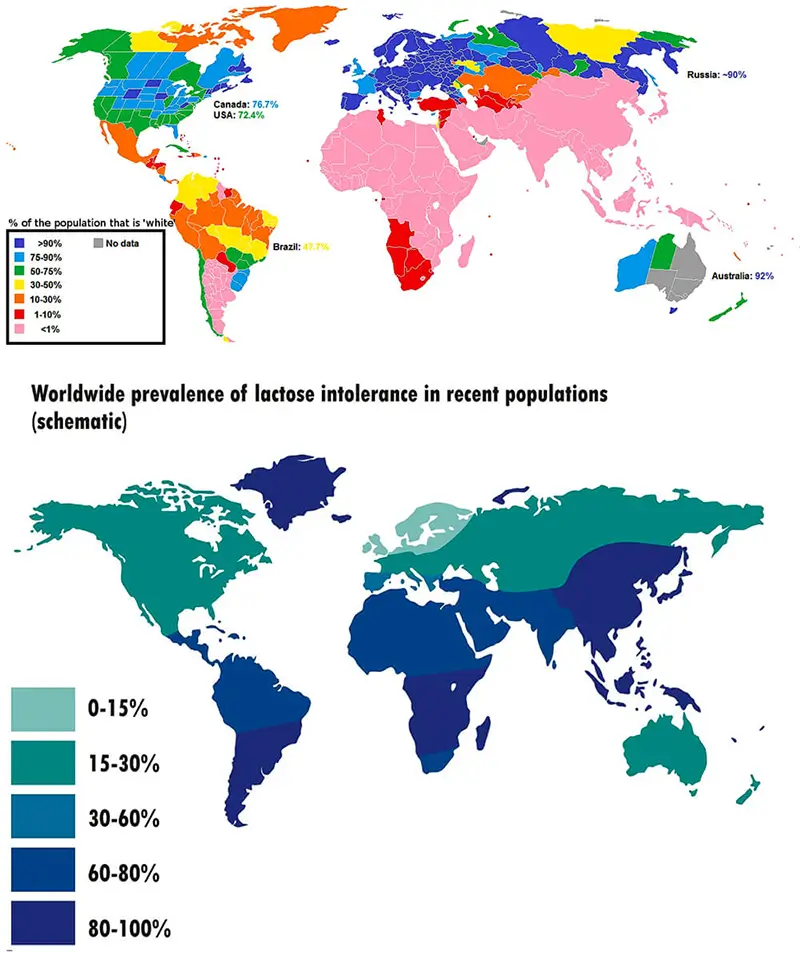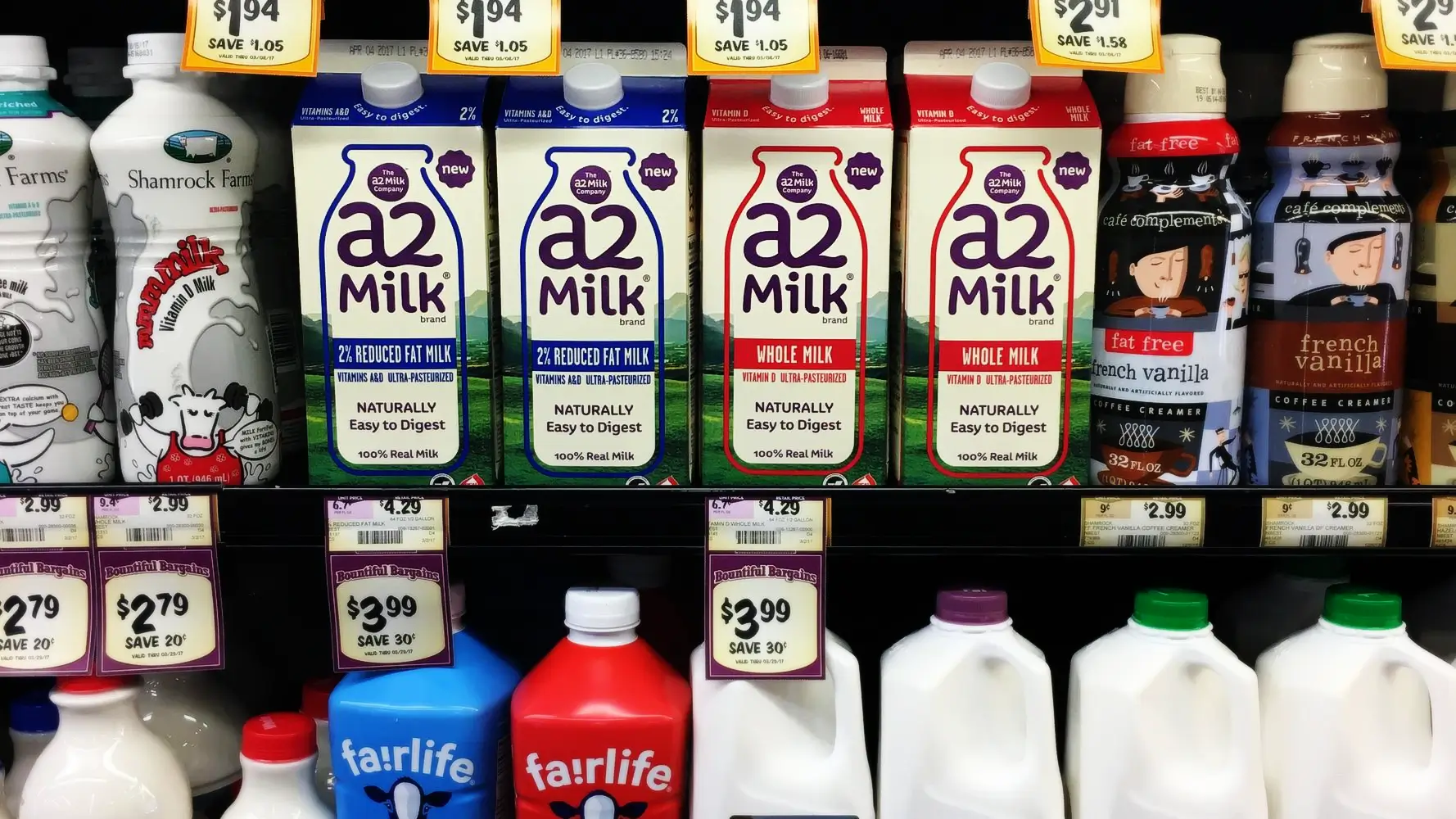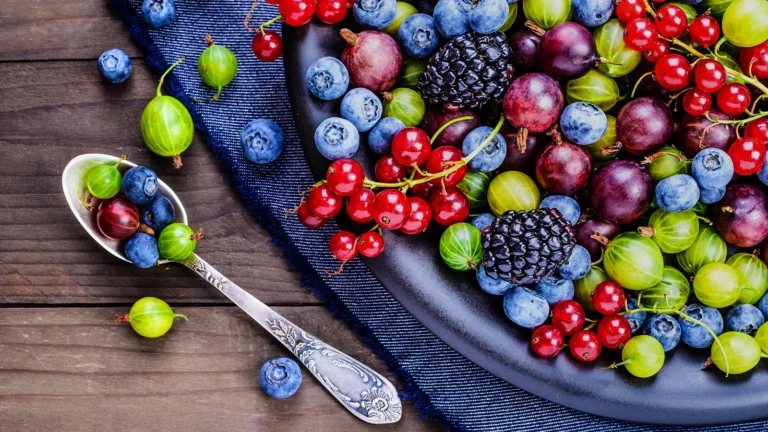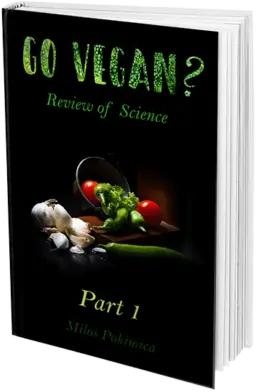La intolerancia a la lactosa - el 65% de probabilidad de tener
Las personas de ascendencia europea pueden tomar leche y el resto del mundo tiene intolerancia a la lactosa. Sin embargo, hay sustancias en la leche que ninguno de nosotros tolera.
Milos Pokimica
Escrito por: Milos Pokimica
Revisado Médicamente Por: Dr. Xiùying Wáng, M.D.
Actualizado el 7 de mayo de 2023Las personas de ascendencia europea pueden tomar leche y el resto del mundo tiene intolerancia a la lactosa. Los africanos negros son intolerantes a la lactosa en un 98% y las cifras de intolerancia a la lactosa en Asia son similares (Ugidos-Rodríguez et al.)[1].
La investigación científica confirmó en diferentes estudios sobre el genoma europeo antiguo que los cazadores-recolectores de Europa no podían digerir la lactosa de la leche hace 8.000 años. Los primeros europeos que domesticaron animales salvajes tampoco podían consumir leche. Los colonos que llegaron de Oriente Próximo hace unos 7800 años también tenían intolerancia a la lactosa. Los pastores yamnaya que llegaron a Europa desde las estepas orientales hace unos 4800 años también tenían intolerancia a la lactosa.
No fue hasta hace unos 4.300 años, a principios de la Edad de Bronce, cuando la tolerancia a la lactosa se extendió por toda Europa (Gamba et al.)[2]. En el mundo actual, la mayoría de la población sigue sin poder digerir la leche. Si las personas intolerantes a la lactosa consumen productos que la contienen, pueden experimentar hinchazón, náuseas, dolor abdominal, flatulencia y diarrea.
La lactosa se descompone en un azúcar normal utilizable mediante una enzima específica llamada lactasa, creada por las células de la pared del intestino delgado (Storhaug et al.)[...3]. La producción de lactasa se desactiva en los mamíferos en la edad adulta porque los mamíferos sólo amamantan en los primeros periodos tras el nacimiento. Más adelante en la vida, en condiciones medias, no es necesario disponer de esta enzima porque ningún mamífero volverá a amamantar, excepto los humanos. Los mamíferos adultos no amamantan y el organismo está adaptado a desactivar las enzimas para ahorrar energía. Al domesticar animales salvajes y ordeñarlos, los primeros agricultores cambiaron las condiciones de su hábitat, y con el tiempo los organismos se adaptaron.
Hoy en día, sólo los descendientes de granjeros europeos pueden digerir la leche. Los negros africanos no. Los asiáticos no pueden. La estadística de la intolerancia a la lactosa es la siguiente. Aproximadamente el 65 por ciento de toda la población humana tiene una capacidad reducida para digerir la lactosa después de la infancia. En comparación, el 5 por ciento de las personas descendientes de europeos del norte son intolerantes a la lactosa.
Sin embargo, hay muchas sustancias en la leche que no podemos tolerar. Incluso si procedemos de países en los que la leche es la reina, no toleramos muy bien el colesterol, una forma de lacto morfina llamada casomorfina y el estradiol (el consumo de lácteos representa entre el 60 y el 80 por ciento de todo el estrógeno que se consume en una persona normal). dieta americana). Los opiáceos de la leche materna producen un efecto sedante en el lactante. Ese efecto sedante es responsable en buena medida del vínculo madre-hijo. La leche tiene un efecto similar al de una droga en el bebé (o en las crías de otros mamíferos), y garantiza que el bebé establezca un vínculo con la madre y proceda a la lactancia y obtenga los nutrientes. Es una adaptación evolutivamente beneficiosa. Al igual que la heroína o la codeína, las casomorfinas ralentizan los movimientos intestinales y tienen un efecto antidiarreico. El efecto opiáceo es la razón por la que el queso puede estreñir al igual que los analgésicos opiáceos.
La lactasa es una enzima que permite al organismo digerir el azúcar de la leche, y ese azúcar es la lactosa. Los daneses sólo tienen un 2% de intolerancia a la lactosa.
Todos los mamíferos tras el rechazo de la lactancia son deficientes en lactasa. No tienen contacto con la leche más adelante en la vida. Las reacciones de cualquier organismo que no necesite utilizar el azúcar lactosa en la edad adulta consisten en desactivar la enzima lactasa a nivel de los genes. Excepto los granjeros europeos, que obligaron a sus organismos durante miles de años a consumirla.
Así, los daneses de hoy sólo son 2% no tolerantes, los finlandeses 18%, los indios 50%, los judíos israelíes 58%, los afroamericanos 70%, los judíos asquenazíes 78%, los árabes 78%, los taiwaneses 85%, los grecochipriotas 85%, los japoneses 85%, los tailandeses 90%, los filipinos 90%, los africanos negros más de 90% (Storhaug et al.)[3]. La OMS ha elevado esa cifra, diciendo que es de alrededor de 95% a 100%, para los indios de 90 a 100, para los asiáticos de 90 a 95, para los mediterráneos de 60 a 75 y para los norteamericanos de 10 a 15 y los europeos de 5 a 10 por ciento.
El verdadero problema es que, aunque seamos tolerantes a la lactosa, ésta se metaboliza de forma antinatural y no debe consumirse durante un periodo prolongado. Tenemos la enzima lactasa que descompone el azúcar lactosa en dextrosa y galactosa. La mitad es glucosa y la otra mitad galactosa.
Sin embargo, la galactosa no puede utilizarse hasta que se digiere en glucosa. Las células sólo utilizan la glucosa como combustible. Existe una enzima llamada beta-galactosidasa que transforma la galactosa en la glucosa que necesitamos. Sin embargo, como ningún animal necesita esta enzima después del rechazo, esta enzima está desactivada para siempre. Todos, todos los humanos del planeta Tierra si es un individuo adulto tiene deficiencia de galactosidasa. Todos los que estáis leyendo esto ahora y yo tenemos una deficiencia de beta-galactosidasa. Esto significa que si consumes azúcar de la leche, es decir lactosa, si eres tolerante a la lactosa puedes utilizarla, tienes lactasa. La lactasa metaboliza la lactosa y obtendrás glucosa y además galactosa. La glucosa se utilizará normalmente. Y con la galactosa, ¿qué vamos a hacer? No podemos usarla así que ¿a dónde va la galactosa?
Una parte se expulsa al exterior a través de la piel. Una parte acaba en los ojos y se almacena en la córnea. Las cataratas de los ancianos proceden de la galactosa. Los adultos que consumen grandes cantidades de leche, y tienen una elevada actividad de lactasa, suelen sufrir acumulación de galactosa en el lóbulo ocular y tienen una alta probabilidad de padecer cataratas de la tercera edad (4).4].
No sólo eso, sino que también se almacena en el cuerpo en otros lugares. En las mujeres se acumula alrededor de los ovarios, y se asocia con el cáncer de ovarios y la infertilidad. Una de cada cuatro parejas acude a tratamientos de infertilidad en los países europeos. En los países africanos, donde no usan leche, no tienen problemas de infertilidad. Se desconoce como enfermedad. En el estudio Daniel W. Cramer Harvard Medical School (Mustafa et al.)[5] un vínculo entre el consumo de la galactosa y el aumento del riesgo de cáncer de ovario se observó. Es probable que las mujeres intolerantes a la lactosa consuman menos lactosa. Concluyeron que: "Este hallazgo sugiere que un menor consumo de lactosa a edades tempranas puede reducir el riesgo de cáncer de ovario, aunque se necesitan más estudios para confirmarlo". En el caso de las mujeres tailandesas, por ejemplo, que no consumen leche, no hay infertilidad a nivel de significación estadística. En Tailandia, donde el 98% de los adultos son intolerantes a la lactosa, la fertilidad media entre las mujeres de 35 a 39 años fue sólo un 26% inferior a la tasa máxima para las de 25 a 29 años. En Australia y el Reino Unido, donde la intolerancia a la lactosa afecta sólo al 5% de las personas adultas, las tasas de fertilidad de 35-39 años son totalmente un 82% inferiores a la tasa máxima de 25-29 años.
Además de los riesgos del consumo de leche en individuos tolerantes a la lactosa pueden beber leche, ¿qué ocurrirá cuando un individuo que no es tolerante a la lactosa beba leche? El azúcar de la leche no se digerirá. Las bacterias del intestino descompondrán la lactosa. Las bacterias comenzarán a multiplicarse, esto aumenta la presión osmótica, el fluido fluye hacia los intestinos y el individuo tiene diarrea.
Después de la Segunda Guerra Mundial, Estados Unidos tenía una gran reserva de leche en polvo de la que tenía que deshacerse de alguna manera. En lugar de eso, decidieron que, como había un "déficit de proteínas", enviarían esa leche en polvo a África como ayuda humanitaria. Muchos niños y bebés ya desnutridos contrajeron diarrea por ello. Los países africanos que recibieron leche en polvo enviada como ayuda humanitaria experimentaron un aumento de la mortalidad, especialmente en niños pequeños que ya estaban en el nivel de desnutrición severa.
Referencias:
Pasajes seleccionados de un libro: Pokimica, Milos. Go Vegan? Examen de Ciencias de la Parte 1. Kindle ed., Amazon, 2018.
- Ugidos-Rodríguez, Santiago, et al. "Malabsorción e intolerancia a la lactosa: A Review". Alimentación y función, vol. 9, nº 8, Royal Society of Chemistry, agosto de 2018, pp. 4056-68. https://doi.org/10.1039/c8fo00555a.
- Gamba, Cristina et al. "Flujo y estasis del genoma en un transecto de cinco milenios de la prehistoria europea". Comunicaciones de la naturaleza vol. 5 5257. 21 oct. 2014, doi:10.1038/ncomms6257
- Storhaug, Christian Løvold et al. "Country, regional, and global estimates for lactose malabsorption in adults: a systematic review and meta-analysis". La lanceta. Gastroenterología y hepatología vol. 2,10 (2017): 738-746. doi:10.1016/S2468-1253(17)30154-1
- Arola, H, y A Tamm. "Metabolismo de la lactosa en el cuerpo humano". Revista escandinava de gastroenterología. Suplemento vol. 202 (1994): 21-5. doi:10.3109/00365529409091741
- Mustafa, Osama M., y Yassine J. Daoud. "Is Dietary Milk Intake Associated With Cataract Extraction History in Older Adults? An Analysis From the US Population". Revista de Oftalmologíavol. 2020, Hindawi Publishing Corporation, febrero de 2020, pp. 1-7. https://doi.org/10.1155/2020/2562875.
- Merritt, Melissa A et al. "Alimentos lácteos y nutrientes en relación con el riesgo de cáncer de ovario y los principales subtipos histológicos". Revista internacional del cáncer vol. 132,5 (2013): 1114-24. doi:10.1002/ijc.27701
¿Tienes alguna duda acerca de la nutrición y la salud?
Me encantaría conocer tu opinión y responderlas en mi próximo post. Agradezco su aportación y opinión y espero tener noticias suyas pronto. También le invito a síguenos en Facebook, Instagram y Pinterest para más contenidos sobre dieta, nutrición y salud. Puedes dejar un comentario allí y conectar con otros entusiastas de la salud, compartir tus consejos y experiencias, y recibir apoyo y ánimo de nuestro equipo y nuestra comunidad.
Espero que este post le haya resultado informativo y ameno y que esté preparado para aplicar los conocimientos adquiridos. Si le ha resultado útil, por favor compártelo con tus amigos y familiares que también podrían beneficiarse de ella. Nunca se sabe quién puede necesitar orientación y apoyo en su camino hacia la salud.
– También Te Puede Interesar –

Aprenda Sobre Nutricion
Milos Pokimica es doctor en medicina natural, nutricionista clínico, escritor sobre salud médica y nutrición y asesor en ciencias de la nutrición. Autor de la serie de libros Go Vegan? Revisión de la Ciencia, también dirige el sitio web sobre salud natural GoVeganWay.com.
Descargo De Responsabilidad Médica
GoVeganWay.com trae los comentarios de la última de la nutrición y la salud relacionados con la investigación. La información proporcionada representa la opinión personal del autor y no pretende ni implica ser un sustituto de consejo médico profesional, diagnóstico o tratamiento. La información proporcionada es sólo para fines informativos y no pretende servir como un sustituto de la consulta, el diagnóstico y/o tratamiento médico de un médico calificado o profesional de la salud.NUNCA ignore el CONSEJO MÉDICO PROFESIONAL O RETRASAR la BÚSQUEDA de TRATAMIENTO MÉDICO a CAUSA DE ALGO QUE HAYA LEÍDO EN O accesibles a TRAVÉS de GoVeganWay.com
NUNCA APLICAR CUALQUIER cambio de ESTILO de vida O CAMBIOS EN su totalidad COMO UNA CONSECUENCIA DE ALGO QUE HA LEÍDO EN GoVeganWay.com ANTES de CONSULTAR con LICENCIA PROFESIONAL MÉDICO.
En el caso de una emergencia médica, llame a un médico o al 911 inmediatamente. GoVeganWay.com no se recomienda ni aprueba ninguna de los grupos, las organizaciones, las pruebas, los médicos, productos, procedimientos, opiniones u otra información que pueda ser mencionado en el interior.
Selecciones del Editor -
Milos Pokimica es escritor especializado en salud y nutrición y asesor en ciencias nutricionales. Autor de la serie de libros Go Vegan? Revisión de la Ciencia, también dirige el sitio web sobre salud natural GoVeganWay.com.
Últimos Artículos –
Top Noticias De Salud — ScienceDaily
- Scientists find a safer way for opioids to relieve painen enero 6, 2026
Researchers at USF Health have discovered a new way opioid receptors can work that may lead to safer pain medications. Their findings show that certain experimental compounds can amplify pain relief without intensifying dangerous side effects like suppressed breathing. This research offers a fresh blueprint for designing opioids that last longer, work better, and pose fewer risks. It also opens doors to safer treatments for other brain disorders.
- Why multiple sclerosis slowly steals balance and movementen enero 6, 2026
Many people with multiple sclerosis struggle with balance and coordination, and this study uncovers a hidden reason why. Researchers found that inflammation in the brain disrupts the energy supply of vital movement-controlling neurons. As their mitochondria fail, these cells weaken and eventually die, worsening motor problems over time. Protecting brain energy systems could open the door to slowing these symptoms.
- A simple drug pair may succeed where liver fibrosis treatments faileden enero 6, 2026
Scientists have found that combining silybin with carvedilol works far better against liver fibrosis than either drug alone. The duo targets the root drivers of liver scarring, sharply reducing collagen buildup and liver damage in experimental models. Importantly, both drugs are already approved and commonly prescribed. That makes this discovery especially promising for rapid clinical translation.
- Scientists discover “migrions,” a viral shortcut that supercharges infectionen enero 6, 2026
Scientists have uncovered a surprising viral shortcut that turns moving cells into delivery vehicles for infection. Instead of spreading one virus at a time, infected cells bundle viral material into large structures called Migrions and pass them directly to new cells. This collective delivery jump-starts viral replication and boosts disease severity. The finding reveals a migration-based route of viral spread that defies classic models of infection.
- Flu drug once blamed for seizures in kids gets a surprising reversalen enero 6, 2026
A long-running debate over Tamiflu’s safety in children may finally be settled. Researchers found that influenza, not the antiviral medication, was linked to serious neuropsychiatric events like seizures and hallucinations. Even more striking, kids treated with Tamiflu had about half the risk of these events compared to untreated children with the flu. The results suggest the drug may be protective rather than harmful.
- Nearly all women in STEM secretly feel like impostorsen enero 6, 2026
Nearly all women in STEM graduate programs report feeling like impostors, despite strong evidence of success. This mindset leads many to dismiss their achievements as luck and fear being “found out.” Research links impostorism to worse mental health, higher burnout, and increased thoughts of dropping out. Supportive environments and shifting beliefs about intelligence may help break the cycle.
- Think you make 200 food choices a day? Think againen enero 5, 2026
The idea that we make over 200 unconscious food choices a day has been repeated for years, but new research shows the number is more illusion than insight. The famous figure comes from a counting method that unintentionally exaggerates how many decisions people really make. Researchers warn that framing eating as mostly “mindless” can undermine confidence and self-control. A more realistic view focuses on meaningful choices—and practical strategies that make healthy decisions easier.












